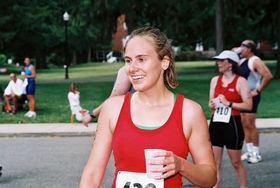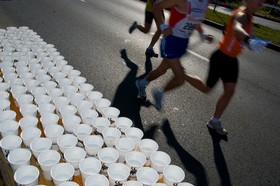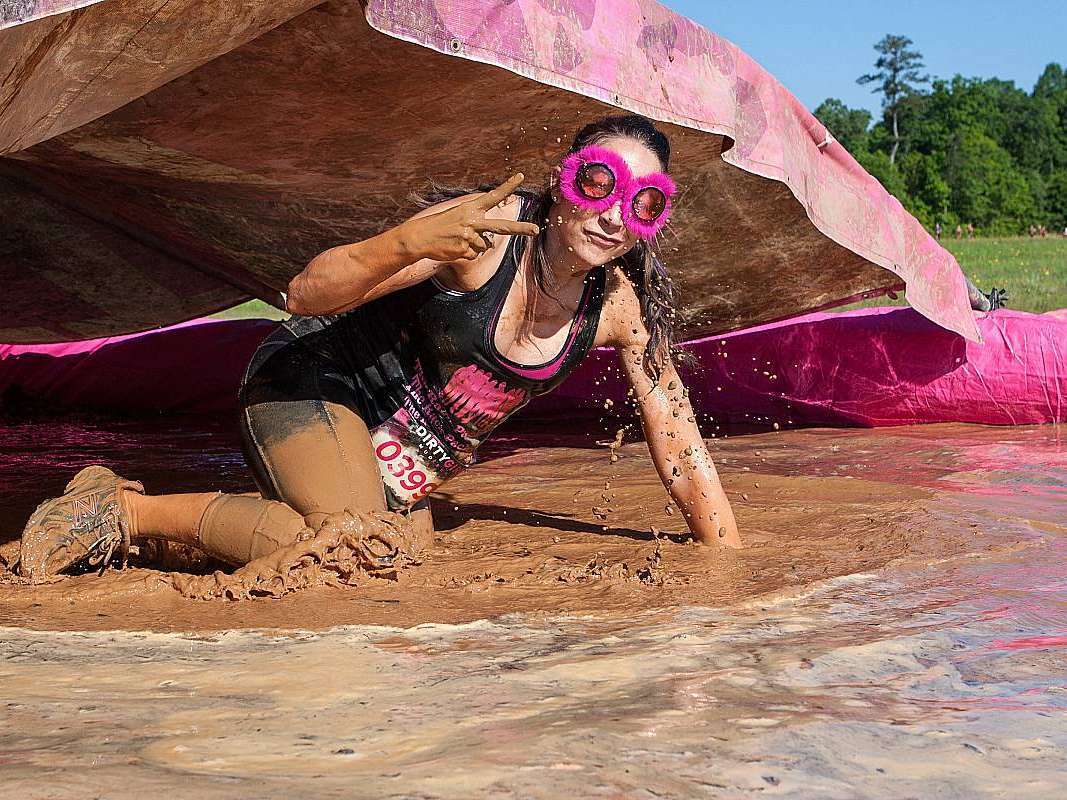 What are the key fuels that need to be replenished during endurance training and competition?
What are the key fuels that need to be replenished during endurance training and competition?
First and foremost, water. Water is considered the most important substance on Earth. It covers 71% of the Earth’s surface.
The human body is anywhere from 55% to 78% water, depending on body size. To function properly, the body requires between one and 7 liters of water per day to avoid dehydration.
Water is the number one concern on any athlete’s intake list. This is especially true for triathletes. You must stay hydrated for optimal performance as an endurance athlete. As you swim, bike, and run long distances, you sweat — which means you lose body weight since water comprises the highest percentage of your weight.
Body Weight Loss Percentages
If you are 160 pounds and run a marathon, in 20 miles you could weigh 154 — which is almost a 4% loss of body weight.
Research shows that anything above a 1% loss of body weight results in declined performance.
- At 4% loss of body weight, your performance level is cut by 30%.
- At 7% loss of body weight, you collapse.
- At 11% loss of body weight, you die.
Just like a car, your body must expel the excess heat generated from burning fuel.
Unlike a car, your body’s coolant isn’t recirculating in a sealed radiator system — you use it once, and then it’s gone and must be replaced. Neither do we come with built-in gauges or indicators that tell us just how much coolant we have left in our system. We can’t run a dipstick down our throat and get a reading that says, “Add a quart.” We do have some physiological signs, but they only function at the “Warning-Danger!” level, too late to maintain optimal performance.
For instance, by the time you feel thirsty, you could have a 2% body-weight water loss, already into the impairment zone.
Dehydration vs Overhydration
On average, you lose about 34 ounces of fluid per hour of exercise. Extreme heat and humidity can raise that amount to three times as much.
At the most, you can absorb about 34 fluid ounces of water per hour, but only under the most extreme heat and humidity. Under more normal conditions you can only absorb about half that amount, even though it won’t fully replace your losses.
If you try and force yourself to consume 34 fluid ounces of water per hour during endurance training or competition you will likely do more harm than good.
In the last post I mentioned the danger of over hydration. The New England Journal of Medicine published a major article showing that 13% of runners in the 2002 Boston Marathon suffered from hyponatremia, a dangerous condition caused by drinking too much fluid.
The figure was surprising because Boston draws the best, fittest, and most experienced runners in the world. If Boston has a 13% rate of hyponatremia, what is it at other marathons? Four runners have died of exercise-associated hyponatremia in the last 12 years after participating in marathons.
How Much Is Too Much? Or Too Little?
Based on the available research…
- For most athletes under most conditions, 20-25 ounces an hour (the equivalent of a large water bottle) is an appropriate fluid intake.
- For lighter weight athletes or those exercising in cooler temperatures, 16-18 ounces an hour may be suitable.
- Heavier athletes or athletes competing in hotter conditions may consider intakes upwards of 28 ounces an hour.
The International Marathon Medical Directors’ Association (IMMDA) recommends that if your event or workout is longer than 30 minutes you should be drinking a sports drink. The added carbohydrate and electrolytes speed up the absorption of fluids and have the added benefit of energy fuel and electrolytes.
According to the IMMDA, there is actually decreased benefit to watering down or diluting sports drinks or alternating sports drinks with water.
 Recent research has also shown that drinking based on thirst is a helpful guideline for fluid intake. The evidence says that thirst will actually protect athletes from the hazards of both over and under drinking by providing real-time feedback on internal fluid balance.
Recent research has also shown that drinking based on thirst is a helpful guideline for fluid intake. The evidence says that thirst will actually protect athletes from the hazards of both over and under drinking by providing real-time feedback on internal fluid balance.
If you are not thirsty, the recommendation is try to refrain from drinking. Do not feel compelled to drink at every fluid station nor follow the cues of other runners — their fluid needs are probably very different from your own.
5 Hydration Tips For Triathlon Training & Competition
#1 You need to be well hydrated before you start your run or workout. If you start partially dehydrated, it only gets worse from there. The color of your urine should be pale yellow, rather than clear or dark yellow. It should look more like lemonade than orange juice.
The 24 hours before the race is by far the most important time to get the water in. Space your fluid intake throughout the day. Drinking large quantities of water right before a race is very rarely helpful, and often leads to the inconvenience of a mid-race bathroom stop. Your serious water intake should have largely stopped 2 hours before the race. After that, it’s sips from then on.
https://youtu.be/_TWuhrF2hGM
#2 Electrolytes are lost along with fluid when you sweat. You need to replace these electrolytes through a sports drink, electrolyte solution or electrolyte table
ts. If you don’t replace electrolytes, particularly sodium, you won’t be able to absorb the fluid you’re drinking. This means that you could be drinking plenty, but not re-hydrating.
#3 On your bike carry 2 bottles, even if you don’t think you will use them. History shows that it can be very hot on race day and you may drop a bottle and need that second one.
#4 Don’t forget your water or sports drink for swim training sessions. Bring it to the lake or set it at the end of your pool lane so you can take a swig if needed.
#5 On long training runs, you will need to either use a fuelbelt or place bottles of fluid at points on your course to ensure you have the fluids you need while training.
I’m over 40 years old, but I don’t give up easily. It wasn’t too long ago that I was exploring the idea of doing my first triathlon. If I can do it, you can too! I'm proof that with a little determination and training, you can get a great deal of fulfillment participating in marathons, triathlons… even ultramarathons.




